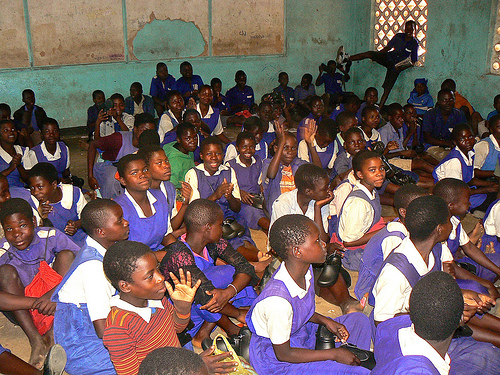Katamba Primary School, Zomba, Malawi … It is estimated world-wide there are 215 million children trapped in child labor, and 115 million in hazardous work including, slavery, armed conflict, drug-trafficking and other illegal activities. The world community recently observed World International Labor Day, and used this time to highlight the plight of child workers, and what can be done to help them. Nations and individuals were reminded to actively safeguard the rights of children by finding ways to keep them in school. Education International (EI) encouraged teacher unions to actively contribute with public activities to end child labor and promote education opportunities for children.
The Challenge is Massive and Varied
Numerous factors force children out of school, and into the work force. Orphaned children and those in war prone countries have a bigger chance of being involved in child or forced labor. In Malawi, the key-contributing factor, in most cases, is poverty after the loss of parents. Many children, especially those who make up child headed households, are leaving school to earn a living. As a result of HIV/AIDS pandemic, many parents die of the disease, and leave their children without hope for the future. These children live in critical poverty. Children, mostly age 10 and under, take responsibility for caring for younger family members. Some of them work in domestic labor, or are trafficked to work in other countries far from home. The lucky ones remain in the village where they are adopted, and cared for by other families. However, they add more pressure for basic resources because the adoptive parents have their own children to support as well. As a result, the new additions are not adequately supported.
Governments have the primary responsibility to make sure children below the minimum age of employment are in the educational system. Getting these children in school is vital, but to ensure they remain in school is extremely important.
Namikango Aids Katamba School
Katamba Primary School west of Zomba, and has an enrollment of over 1,400 students. Children sit on the floor of this 63-year-old school. Two factors are helping keep them in school. Earlier in the year, thanks to the Malawi Project this school received a provision of textbooks that were sorely needed Additionally, Namikango Mission has implemented a project called; “Shoes for Better Grades.” Trailers filled with new shoes have been shipped from the Malawi Project, and they are distributed in the “Shoes for Trees” program, as well as the “Shoes for Better Grades” program. Students who perform better in their second term of education receive new shoes. The shoes are distributed in ceremonies witnessed by the rest of the students, and this encourages the other students to work harder. It is another of the Malawi Project inspired programs that encourages self-reliance, and the need for our people to resolve their own problems, with aid and encouragement from the rest of the world.
By the time of this report 4,521 primary school students have benefited from the program. As we jointly fight child labor, it is evident finding ways to motivate and support children, to remain in school, is a key tool to preventing a high drop out rate. The better the learning environment, the more motivated the children, the more chances there are they will remain in school, and that will lead to an end of child labor. Together we can jointly change the nation.
by Wilson Tembo
Programs like this one can only continue if you make the funds available. Please go to the yellow “Donate” button, and program a contribution for weeks and months ahead.

